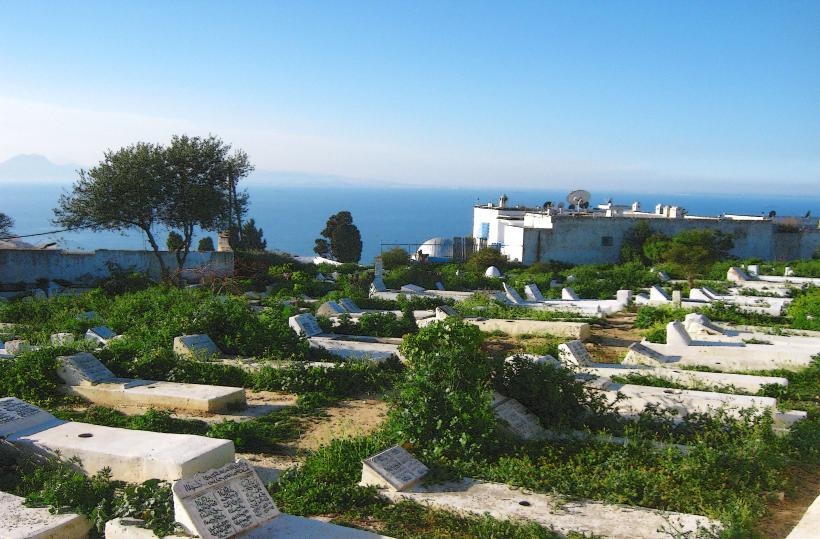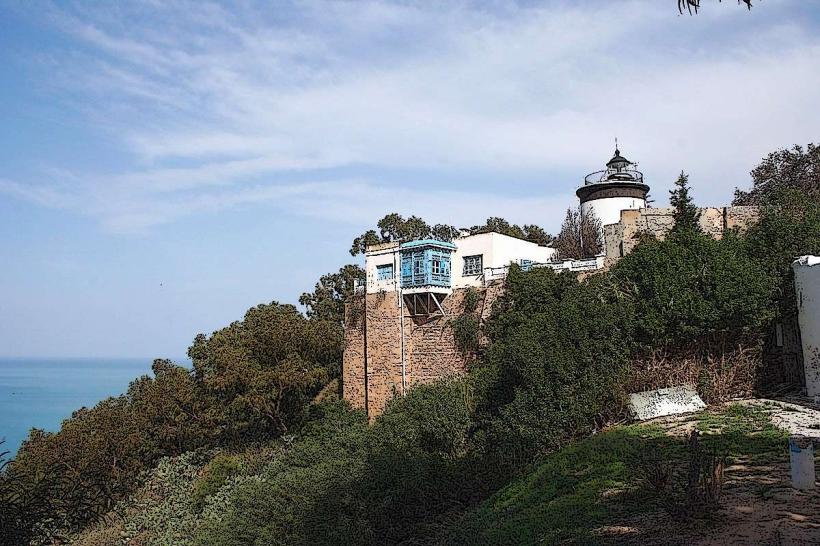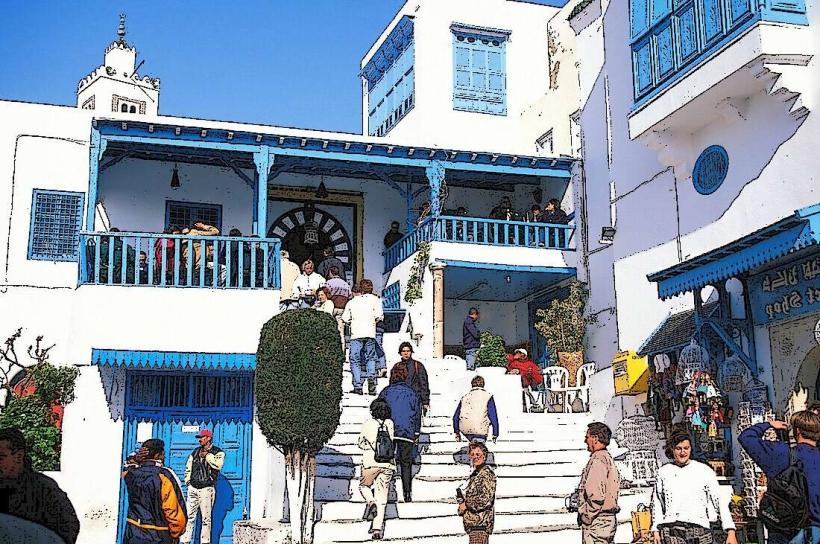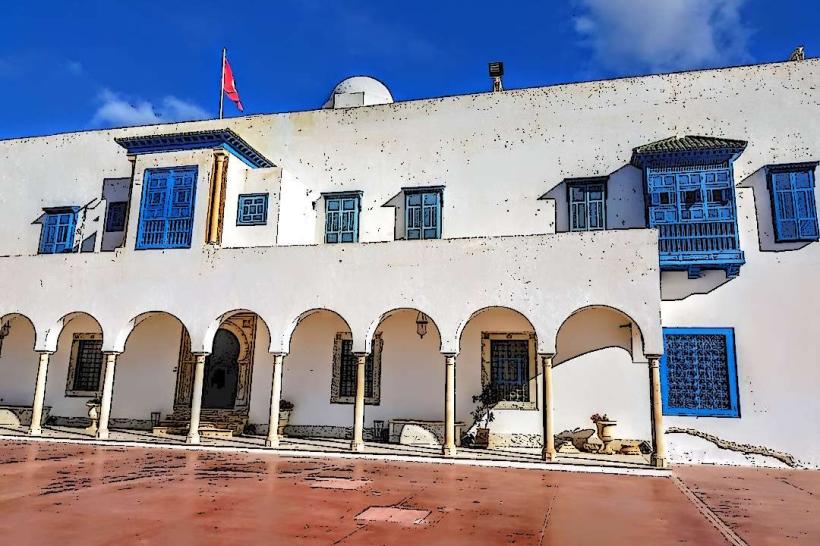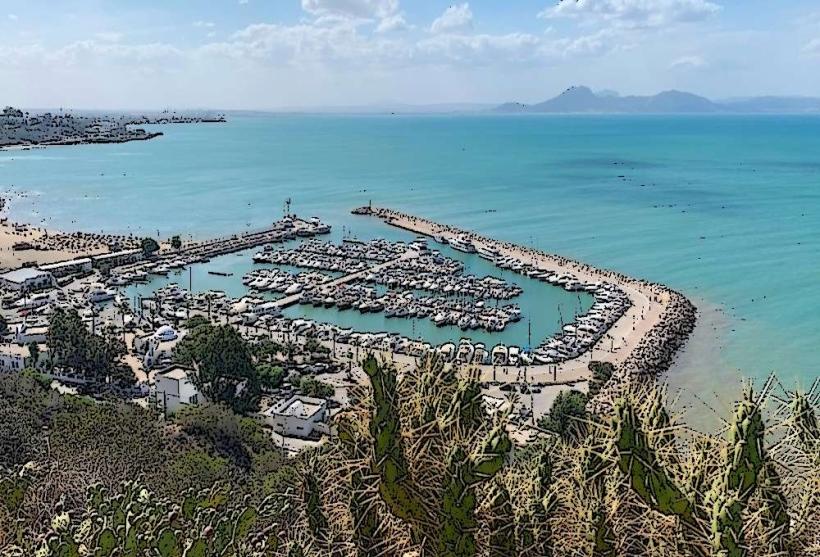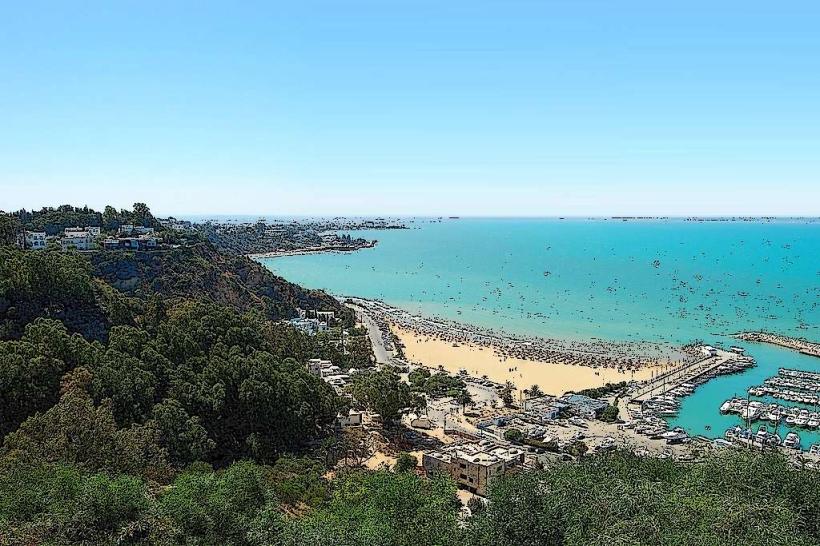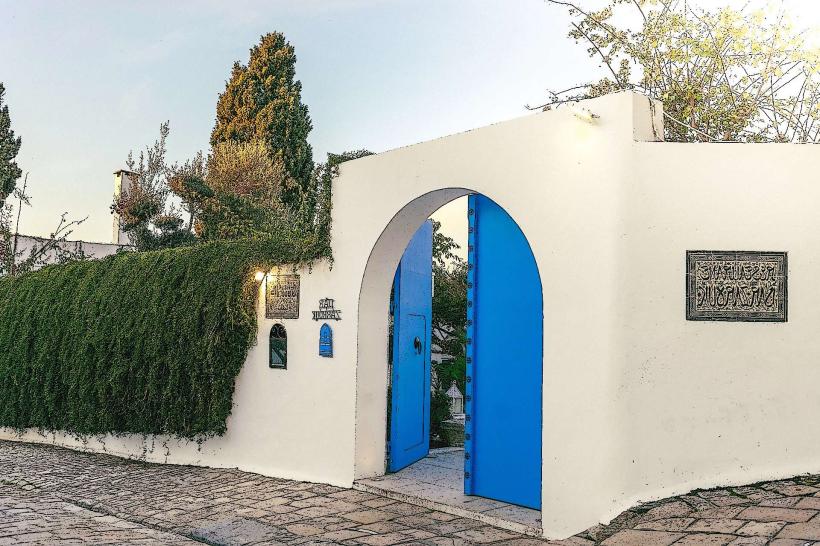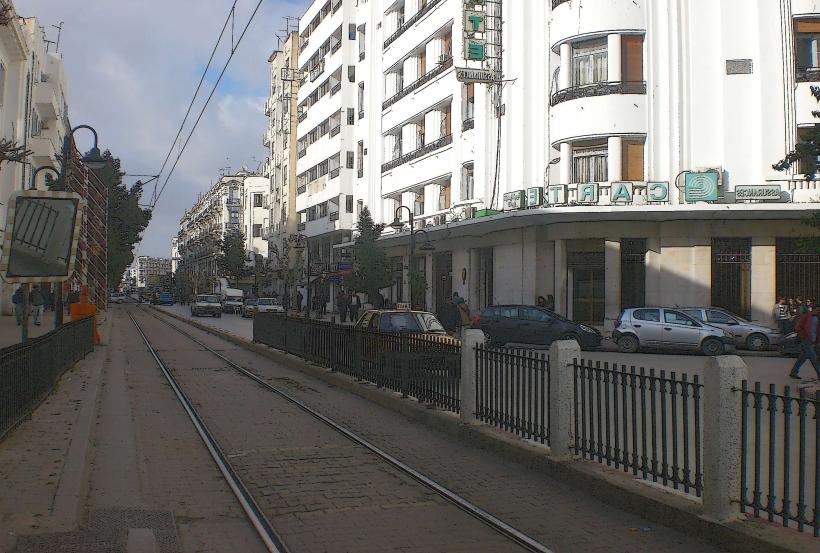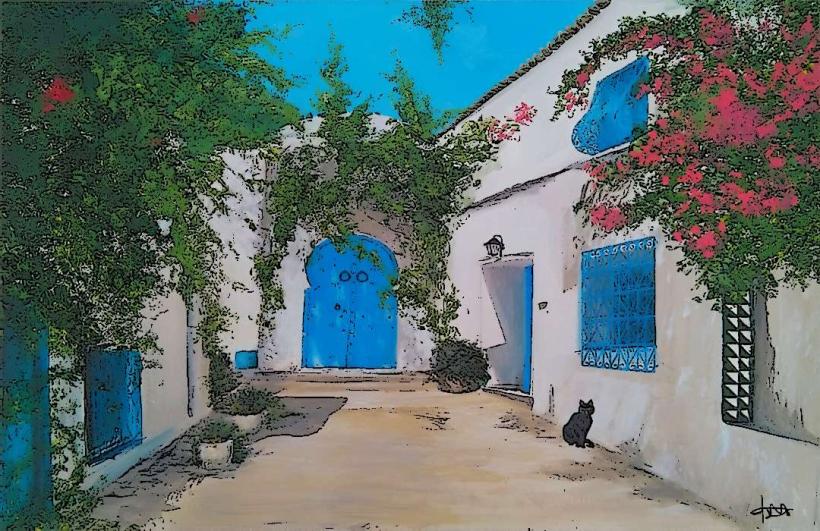Information
Landmark: Dar El AnnabiCity: Sidi Bou Said
Country: Tunisia
Continent: Africa
Dar El Annabi, Sidi Bou Said, Tunisia, Africa
Overview
Dar El Annabi stands out as one of the most iconic timeworn homes in Sidi Bou Said, Tunisia, with its vivid blue doors catching the sunlight, after that in the center of the village, this once-aristocratic home now stands as a museum, its polished wood floors and ornate arches drawing visitors into the rhythms, traditions, and everyday rooms of a wealthy Tunisian family from the 18th and 19th centuries.It’s a striking blend of North African Arab-Andalusian style and distinctive Tunisian touches, like intricate tilework that catches the afternoon light, equally important in the late 18th century, Dar El Annabi rose as a summer retreat for Taïeb El Annabi, a respected figure from a devout, scholarly family, where the scent of jasmine drifted through its sunlit courtyards.In Tunisian circles, the Annabi family stood out, connected to both revered Islamic scholars and the town’s influential elite, then the home’s design shows its status in every detail, from marble floors that catch the light to hand-carved woodwork blending Islamic patterns with Mediterranean curves.The house stayed in private hands until the mid-20th century, when its oak-paneled rooms began opening to the public, subsequently today, it serves as an ethnographic museum, giving visitors a rare, detailed glimpse into the elegant, sunlit rooms of traditional Tunisian aristocratic life.Dar El Annabi’s design captures the essence of a traditional Tunisian courtyard home, its white arches and blue shutters shaped to fit the steep hillside of Sidi Bou Said, then one standout feature is the central courtyard-the home’s heart-ringed by rooms stacked across several levels, with sunlight pooling in its open center.Rich tiles stretch across the floor, where a fountain splashes softly between pots of citrus trees, wrapping the space in quiet seclusion, and andalusian Garden: In the back, jasmine drapes over stone walls, bougainvillea bursts in pink and purple, and orange trees line neat, symmetrical paths among other Mediterranean blooms.It’s both gorgeous to view at and pleasant to be near, casting cool shade while releasing a soft, sweet scent, moreover roof terraces rise in tiers, offering wide-open views of the Gulf of Tunis, the sunlit white walls of the village, and the vivid blue domes of nearby mosques.People use the terraces to dry crisp laundry in the sun, stash away clay pots, and host lively family gatherings, moreover decorative touches include shimmering Zellige tiles with their precise geometric patterns, carved stucco arches, and hand-painted wooden doors and ceilings, while ornate wrought-iron grilles frame the windows; inside, spaces flow from welcoming reception rooms to quiet family quarters, practical service areas, and a slight personal musalla tucked away for prayer.Inside the museum, you’ll find more than 50 rooms, each carefully restored and dressed to match its original purpose-like a study with worn leather chairs and sunlight spilling across the desk, in turn visitors wander through rooms such as the Majlis, where male guests are welcomed and formal gatherings unfold over trays of sweet tea, to some extent Each room bursts with detail-mosaic tiles catch the light, soufahs offer low, inviting seats, and antique furniture adds a touch of history, then living quarters include bedrooms with carved cedar beds, soft embroidered linens, and antique wardrobes that smell faintly of polished wood.The kitchen brimmed with traditional ceramic pots, jars of fragrant spices, and charcoal stoves, carrying the warm, smoky flavor of the era’s cooking, at the same time children’s Rooms and Schoolroom: Show how kids once learned at home-reading scripture at the kitchen table and practicing everyday skills by hand.Bridal Chamber: Showcases a wedding dress that tips the scale at over 20 kilos, shimmering with gold embroidery and heavy, intricate jewelry, along with the room mirrors the customs of a traditional Tunisian wedding, from the rich red fabrics to the faint scent of jasmine in the air.The prayer room is miniature and simply decorated, with Qur’ans stacked neatly on a low shelf, prayer mats folded in the corner, and other devotional items that reflect the family’s faith, as well as dar El Annabi isn’t just an architectural landmark-it’s a living museum where Tunisian culture breathes in every carved doorway and sunlit courtyard, for the most part Step inside and you’ll detect lifelike mannequins in traditional dress, set in scenes of everyday family life-a steaming pot of tea on the table, a teacher guiding a child through Quranic verses, a wedding party gathered in celebration, also across Tunisia, traditional costumes shift from region to region, with embroidery that can glint like gold thread, colors ranging from deep indigo to vivid crimson, and fabrics that differ between everyday outfits and those saved for celebrations.Jewelry and ceremonial pieces include gold filigree earrings, coral necklaces, and wedding accessories-delicate items you can’t find being made today, in conjunction with photographic archives hold classical black-and-white shots of the Annabi family, along with early scenes of Sidi Bou Said-a boy in a cap standing beside a sunlit blue door, sort of Household tools included weaving looms, olive oil presses, and spice grinders, their handles worn smooth from years of use, subsequently each display doesn’t just show you something to inspect at-it pulls you into the textures and rhythms of historical Tunisia, revealing domestic life, family bonds, gender roles, and the tiny everyday customs that shaped the era.From what I can see, You’ll find the Visitor Experience spot in the heart of Sidi Bou Said, tucked down a narrow side street off Rue Hedi Zarrouk where the scent of jasmine drifts past, just a short amble away, simultaneously atmosphere: The locale feels calm, almost intimate, like the quiet sway of a candle flame beside you.The house stays still, far from the chatter and footsteps of crowded tourist spots, giving you space to pause and take it in, as well as most visitors linger anywhere from 45 minutes to an hour and a half, enough time to stroll through the garden and explore the property.Guided tours are offered in several languages, often led by a family descendant or a local guide who knows the scent of the vintage wood by heart, consequently the gift shop is a cozy corner stocked with books, postcards, and handmade souvenirs that carry the colors and textures of Tunisian culture.Importance Dar El Annabi isn’t just a museum-it’s a time capsule, holding onto the colors, patterns, and quiet routines of Tunisia’s former elite homes, while with its cozy scale and thoughtful selection-like a worn leather-bound map in the corner-it’s easily one of the most rewarding stops for anyone drawn to history, design, and traditional ways of life.It rounds out the Sidi Bou Said experience by rooting its striking blue-and-white facades and sweeping views in the everyday lives of the people who once called the village home.
Author: Tourist Landmarks
Date: 2025-09-27

